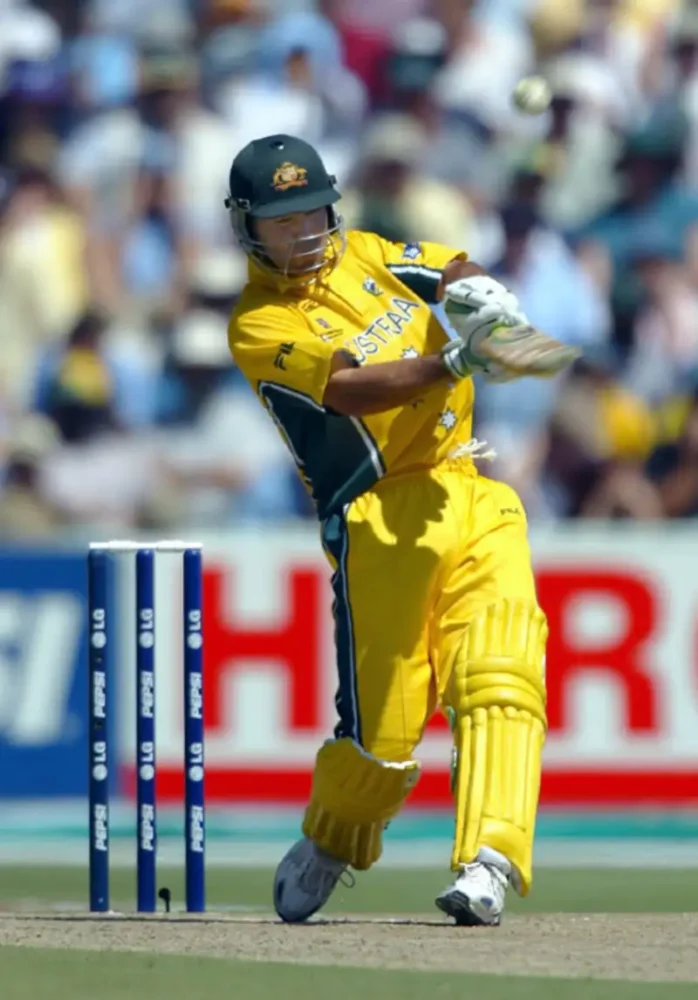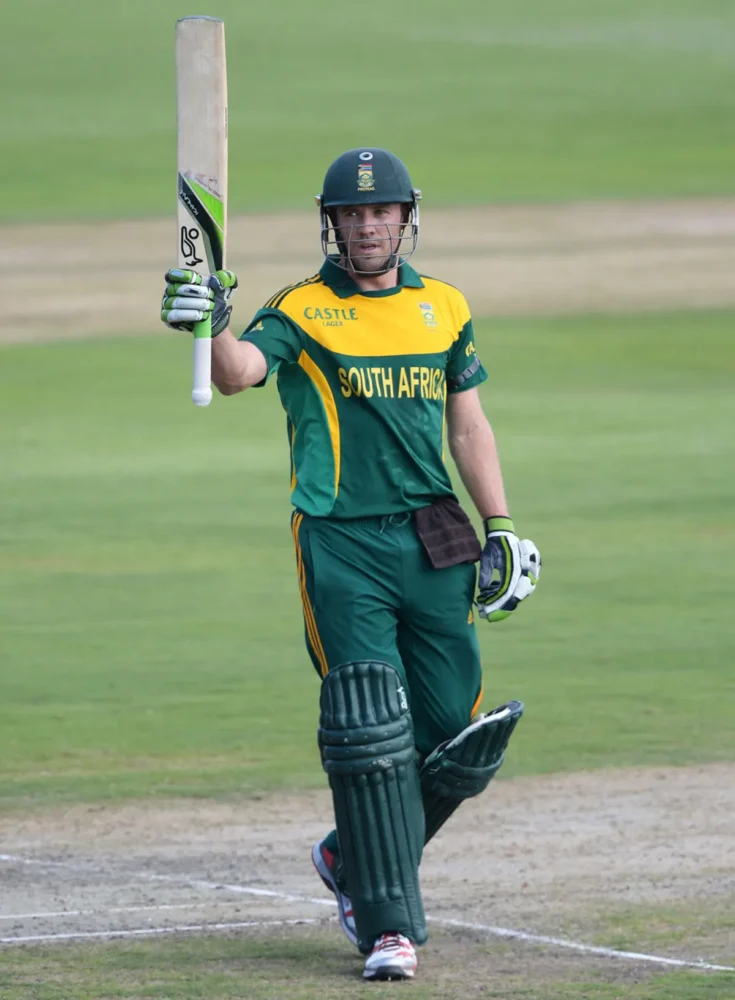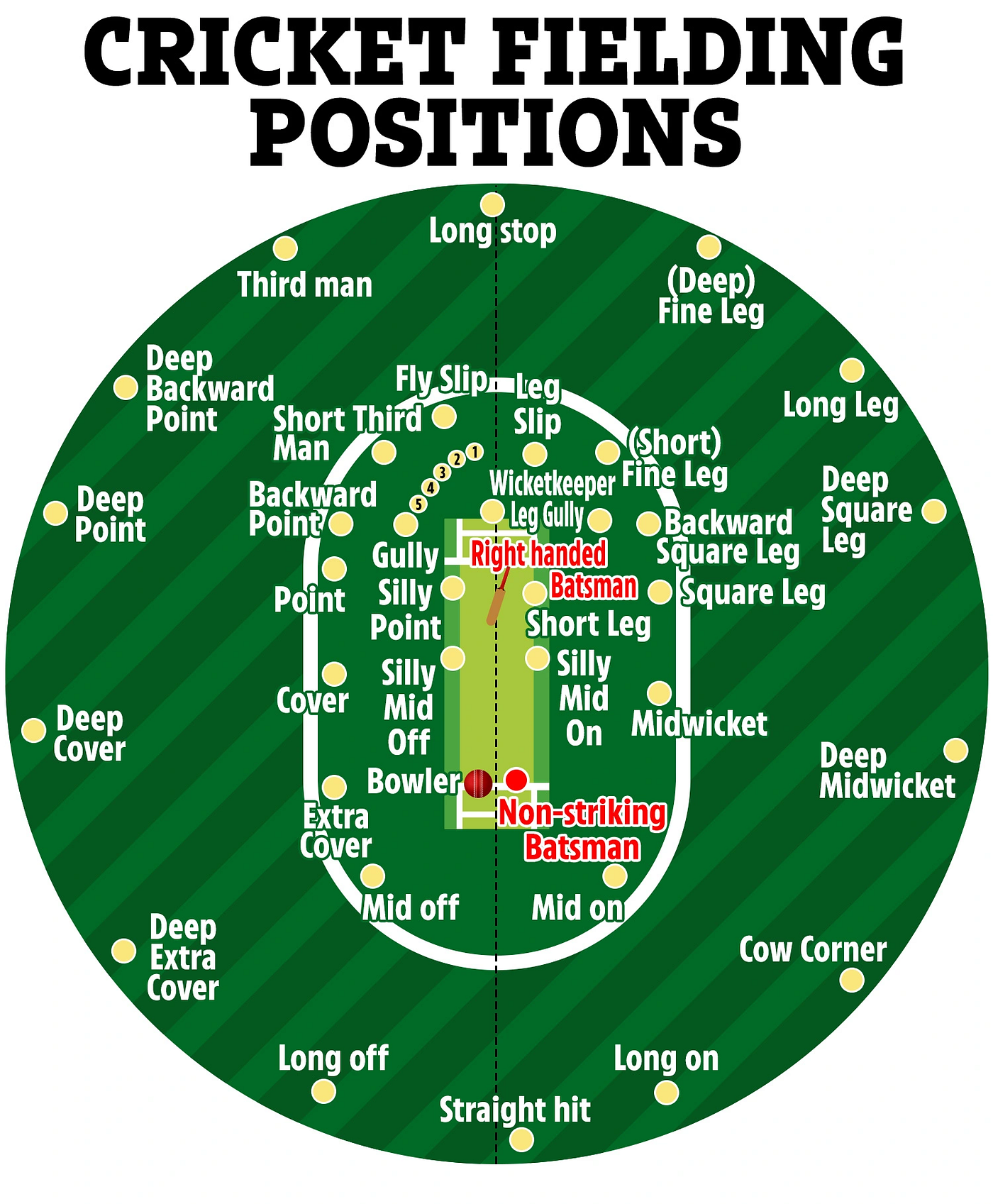Cricket Fielding Position Names

Cricket is a game rich in tradition and strategy, and nowhere is this more evident than in the myriad of fielding positions that dot the cricket field. Each position has its unique name and specific role, contributing to the team’s overall fielding strategy. Understanding these positions is crucial for players, coaches, and fans alike. This article provides a comprehensive guide to the various fielding positions in cricket.
The Basics of Cricket Fielding Positions
The cricket field is divided into two main areas: the off side and the leg side (or on side). The off side is the half of the field in front of the batsman (right-handed) and to the batsman’s right. The leg side is the half behind the batsman and to the batsman’s left. Fielding positions are named relative to the batsman’s stance and the bowler’s delivery.
Infield Positions
- Wicketkeeper: Positioned directly behind the stumps at the striker’s end, the wicketkeeper is crucial for catching edges, stopping deliveries that the batsman misses, and making stumpings and run-outs.
- Slip: Positioned adjacent to the wicketkeeper, the slips are there to catch edges from the batsman. The first slip stands closest to the wicketkeeper, followed by the second slip, third slip, and so on, forming a cordon.
- Gully: Positioned wider than the slips, between the slips and point, the gully is set to catch edges that are not fine enough for the slips.
- Point: Located on the off side, square with the batsman, point fields balls hit square or behind square on the off side. A backward point is slightly behind the square, while a forward point is slightly in front.
- Cover: Positioned on the off side, between point and mid-off, the cover fielder intercepts drives and cuts. A cover point is more towards point, while extra cover is closer to mid-off.
- Mid-off: Located straight but on the off side, the mid-off fields straight drives and stops balls hit between cover and the bowler.
- Mid-on: Similar to mid-off but on the leg side, the mid-on stops straight drives and balls hit between mid-wicket and the bowler.
- Mid-wicket: Positioned on the leg side, between mid-on and square leg, mid-wicket fields shots hit through the mid-wicket area. A deep mid-wicket stands further out to intercept lofted shots.
- Square Leg: Positioned on the leg side, square with the batsman, square leg fields shots played through the square leg area. A backward square leg stands behind square, while a forward square leg stands in front.
- Leg Slip: Similar to the off-side slips but on the leg side, leg slip catches glances and deflections.
Outfield Positions
- Third Man: Positioned on the off side, behind the wicketkeeper and slips, third man stops edges and cuts that pass the slips. A fine third man stands closer to the boundary.
- Fine Leg: Located on the leg side, behind the wicketkeeper, fine leg fields glances and deflections. A fine leg standing further out is called a deep fine leg.
- Deep Square Leg: Positioned further out on the leg side, deep square leg intercepts lofted shots and saves boundaries.
- Deep Mid-wicket: Positioned further out on the leg side, deep mid-wicket intercepts lofted shots and saves boundaries hit in the mid-wicket region.
- Long Off: Positioned on the boundary on the off side, long off fields straight drives and lofted shots over mid-off.
- Long On: Positioned on the boundary on the leg side, long on fields straight drives and lofted shots over mid-on.
- Deep Extra Cover: Positioned on the boundary on the off side, deep extra cover fields lofted shots over the covers.
- Cow Corner: An informal term for the deep position between deep mid-wicket and long on, cow corner fields lofted shots hit over mid-wicket.
Specialist Positions
- Silly Point: Positioned very close to the batsman on the off side, silly point fields short defensive shots and tries to catch the batsman off guard.
- Silly Mid-off: Positioned very close to the batsman on the off side, but straighter than silly point, silly mid-off fields short defensive shots.
- Short Leg: Positioned very close to the batsman on the leg side, short leg fields short defensive shots and edges off the pads.
- Leg Gully: Positioned wider than leg slip, leg gully fields leg glances and deflections.
- Fly Slip: Positioned deeper than the normal slips, fly slip fields edges and upper cuts that go over the slips.
Conclusion
Understanding cricket fielding positions is essential for strategic play and effective fielding. Each position has a specific role and contributes to the team’s ability to prevent runs and take wickets. Whether close-in fielders applying pressure or boundary riders saving runs, every fielder plays a critical part in the game of cricket. These positions, steeped in tradition and tactical importance, continue to evolve with the sport, reflecting the dynamic nature of cricket.
Fielding Cricketers in Cricket History
Fielding is an often underrated yet immensely crucial aspect of cricket. Exceptional fielders can change the course of a match with their agility, quick reflexes, and brilliant catches or run-outs. Over the years, several cricketers have set high standards in the field, but three names stand out for their extraordinary contributions: Jonty Rhodes, Ricky Ponting, and AB de Villiers.
Jonty Rhodes: The Pioneer of Modern Fielding

Jonty Rhodes, born on July 27, 1969, in Pietermaritzburg, South Africa, is often regarded as the best fielder in cricket history. His fielding revolutionized the game, making it an integral part of a team’s strategy.
Key Attributes and Contributions:
- Agility and Reflexes: Rhodes was known for his exceptional agility and quick reflexes. His ability to anticipate the ball’s trajectory and position himself perfectly made him a nightmare for batsmen.
- Iconic Moments: The 1992 World Cup saw Rhodes perform one of cricket’s most memorable fielding feats. His full-length diving run-out of Inzamam-ul-Haq remains iconic, showcasing his athleticism and sharp cricketing mind.
- Impact on the Game: Rhodes’ fielding skills highlighted the importance of this aspect of cricket. His dedication to fitness and fielding drills set a new benchmark, prompting teams to focus more on fielding techniques and training.
Ricky Ponting: The Strategic Maestro

Ricky Ponting, born on December 19, 1974, in Launceston, Tasmania, Australia, is celebrated not only for his batting and captaincy but also for his superb fielding skills. Ponting’s ability to make game-changing plays in the field was instrumental in Australia’s dominance in world cricket during his era.
Key Attributes and Contributions:
- Safe Hands: Ponting was renowned for his safe pair of hands, especially in the slips and cover region. His quick reflexes and sharp eye coordination made him one of the most reliable fielders.
- Acrobatic Catches: His diving catches and sharp run-outs were a regular feature in matches. One of his most famous moments was his stunning catch to dismiss Rahul Dravid in the 2003 World Cup final.
- Leadership by Example: As a captain, Ponting led by example in the field. His energy and commitment inspired his teammates, raising the overall fielding standards of the Australian team.
AB de Villiers: The Versatile Genius

AB de Villiers, born on February 17, 1984, in Pretoria, South Africa, is known for his versatility and brilliance in all aspects of the game, including fielding. His athleticism and innovative fielding techniques have made him one of the most admired fielders in modern cricket.
Key Attributes and Contributions:
- Versatility: De Villiers’ ability to field in multiple positions, from the outfield to the slips, showcased his versatility. His quick movements and sharp throws were crucial in saving runs and affecting run-outs.
- Spectacular Catches: Known for his extraordinary catching ability, de Villiers’ boundary-line catches and diving efforts have often left spectators in awe. His catch to dismiss Alex Hales in an ODI against England is a testament to his fielding prowess.
- Fielding Innovation: De Villiers brought a level of innovation to fielding, often making unconventional but highly effective plays. His proactive approach and adaptability have set new standards for modern fielders. Eknath Solkar
Eknath Solkar

Eknath Solkar, who played for India in the late 1960s and early 1970s, is often regarded as one of the finest close-in fielders in the history of the game. Solkar’s fielding at positions like short leg and silly point was revolutionary at a time when fielding was not given as much emphasis.
Key Attributes:
- Bravery and Reflexes: Solkar’s fearless attitude and lightning-quick reflexes made him a formidable presence in close-in fielding positions.
- Agility: His agility and ability to anticipate the batsman’s movements enabled him to take spectacular catches and effect crucial run-outs.
- Memorable Performances: Solkar is particularly remembered for his outstanding fielding during the 1971 series against England, where he played a crucial role in India’s historic series win.
Ravindra Jadeja: The Complete Package

Ravindra Jadeja, often hailed as one of the best fielders in contemporary cricket, brings an all-round brilliance to the field. His fielding skills are a crucial component of his overall game, making him an asset in any format of cricket.
Key Attributes:
- Agility and Reflexes: Jadeja’s quick reflexes and unparalleled agility make him a formidable presence anywhere on the field, be it in the inner circle or the outfield.
- Arm Strength: His powerful and accurate throwing arm is legendary, often resulting in spectacular run-outs.
- Consistency: Jadeja consistently contributes to saving runs and taking breathtaking catches, underlining his importance to the Indian team..
Conclusion
Jonty Rhodes, Ricky Ponting, and AB de Villiers have redefined fielding in cricket, each bringing their unique style and excellence to the game. Rhodes set the foundation with his groundbreaking techniques, Ponting exemplified reliability and leadership, and de Villiers added versatility and innovation. These three cricketers have not only elevated the art of fielding but have also inspired future generations to strive for excellence in this crucial aspect of cricket. Their legacies continue to influence the game, ensuring that fielding remains a key component of cricket’s evolution.
FAQs





The meticulous dissection exhibited in your work are truly impactful.
This piece sets a new standard and encourages growth in a powerful way.